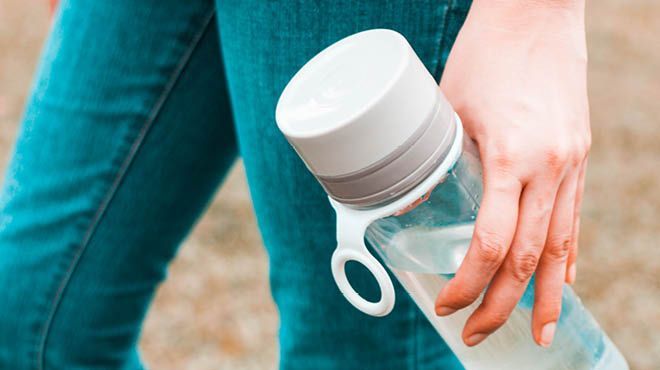BLOG
Clear, Clean, & Healthy Living

By Bruce Swartz
•
30 Oct, 2023
Drinking water does more than just quench your thirst. It's essential to keeping your body functioning properly and feeling healthy. Below is an article out of the Mayo Clinic Health System with healthy tips on drinking water. Nearly all of your body's major systems depend on water to function and survive. With water making up about 60% of your body weight, it's no surprise what staying hydrated can do for you. Here are just a few examples of the ways water works in your body: Regulates body temperature Moistens tissues in the eyes, nose and mouth Protects body organs and tissues Carries nutrients and oxygen to cells Lubricates joints Lessens burden on the kidneys and liver by flushing out waste products Dissolves minerals and nutrients to make them accessible to your body How much water do you need? Every day, you lose eight to 12 cups of water through breathing, perspiring, and urine and bowel movements. In general, men need at least 12 cups of fluid daily, while women require a minimum of nine cups. Factors that increase your fluid needs include exercise, hot weather, high altitude, a high-fiber diet, and increased losses from caffeine and alcohol intake. Adequate hydration varies from person to person. A practical way to monitor hydration is by observing the color of your urine right after you get up in the morning. Straw- or lemonade-colored urine is a sign of appropriate hydration. Dark-colored urine — about the color of apple juice — indicates dehydration. That's why it's important to replenish your body's water supply with beverages and food that contain water. While you should meet most of your fluid needs by drinking water, beverages such as soups, milk, 100% fruit juice and decaffeinated teas are an option. Fruits and vegetables also contain a fair amount of water. Since it's hard to track the amount of water you get from food, it's best to try for at least eight cups of fluid daily. Ways to stay hydrated Developing healthy water habits isn't a heavy lift. By practicing some of these tips, they'll soon become a natural part of your day: Start the morning off by drinking a glass of water as soon as you wake up, even before coffee. Carry a water bottle wherever you go. Set goals for yourself. Cut out sugary beverages to avoid empty calories. By consuming the minimum recommendation of water, you're helping your body function better and improving your overall health. For more information about ways to consume more water and find out if you're getting enough for your body's needs, talk to your health care professional. Don't like plain water? If you like the tingle of carbonated soda, try club soda, seltzer or sparkling water with a splash of fruit juice. If you're looking for a little flavor in your water, try adding a slice of lemon or lime or making fruit-infused water. Here's a recipe to try: Strawberry basil-infused water 1 pint sliced strawberries 10 fresh basil leaves, torn 1 sliced lemon 2 quarts water Combine strawberries, basil and lemon in a 64-ounce pitcher. Pour water over the top and chill for at least three hours. This refreshing, flavored water can be stored in the refrigerator for up to two days. In the below video, physician assistant Abbie Bartz explains thirst cues and more.

By By Michael Haederle
•
03 Oct, 2023
A new study published by University of New Mexico researcher Johnnye Lewis with colleagues from across the U.S. warns that water from many wells and community water systems contains unsafe levels of toxic contaminants, exposing millions to health risks, including cancer. Most Americans take it for granted that the water that comes out of their taps is clean and safe to drink. But a new study published by a University of New Mexico scientist with colleagues from across the U.S. warns that water from many wells and community water systems contains unsafe levels of toxic contaminants, exposing millions to health risks, including cancer. The review in the Journal of Exposure Science and Environmental Epidemiology also finds that people living on tribal lands or in minority communities are disproportionately affected and predicts that climate change will make it harder to locate safe sources of drinking water. The paper emerged from a meeting of senior scientists at the annual meeting of the International Society for Exposure Epidemiology, said Johnnye Lewis, PhD, professor emerita in the Department of Pharmaceutical Sciences, multiple principal investigator of the Navajo Birth Cohort Study, co-director of Community Environmental Health Program and director of the UNM METALS Superfund Research Program.

By WebMD Editorial Contributors
•
25 Oct, 2021
Steam rooms are enclosed spaces that are heated with steam generators. They are commonly used after workouts and in spas for relaxation and recovery. Steam rooms have some health benefits. Steam Room vs. Saunas Steam rooms and saunas are similar. A sauna uses dry heat and is generally hotter than a steam room. Saunas are typically kept at around 160 to 220 degrees Fahrenheit, but steam rooms are cooler. They are usually around 110 to 120 degrees F. Both encourage sitting in the heat as a form of recovery. A sauna can help relax your sore muscles. It can also help with heart health and circulation. However, the humidity from the steam might have additional benefits for your body. Saunas and steam rooms are often found in gyms and spas. Some people even have them in their homes. A sauna usually uses hot rocks, a stove, or an electric heater to heat the room with wood paneling to keep the heat in. This usually means it has to be a special room. You can turn your bathroom into a makeshift steam room by running a hot shower and letting the steam fill the room. Health Benefits of Steam Rooms Steam bathing is a very old practice used by many cultures in different countries. The ancient Greeks and Romans regularly used steam bathing and hot springs. Indigenous peoples also used steam and sweating as health practices. Today, steam therapy and sauna therapy are popular in Finland. Steam rooms have specific health benefits. These include: Clearing congestion Improving skin health Lowering blood pressure Improving circulation Easing bronchitis symptoms Workout recovery Relaxation Lowering joint stiffness Congestion. Steam loosens mucus and phlegm. This can help you blow your nose better and clear congestion. It can be useful during allergy season or when you have a cough or cold. A steamy shower is especially helpful for children, rather than using a bowl of steam that can cause scalding. Improving skin health. Steam opens your pores and cleanses your skin. It can help loosen any dirt and debris buildup, which can help improve the appearance of your skin.

Our business hours are Monday - Friday 9am-5pm
info@americansteamandfiltration.com
(470) 242-1145
Copyright©2020 All Rights Reserved.